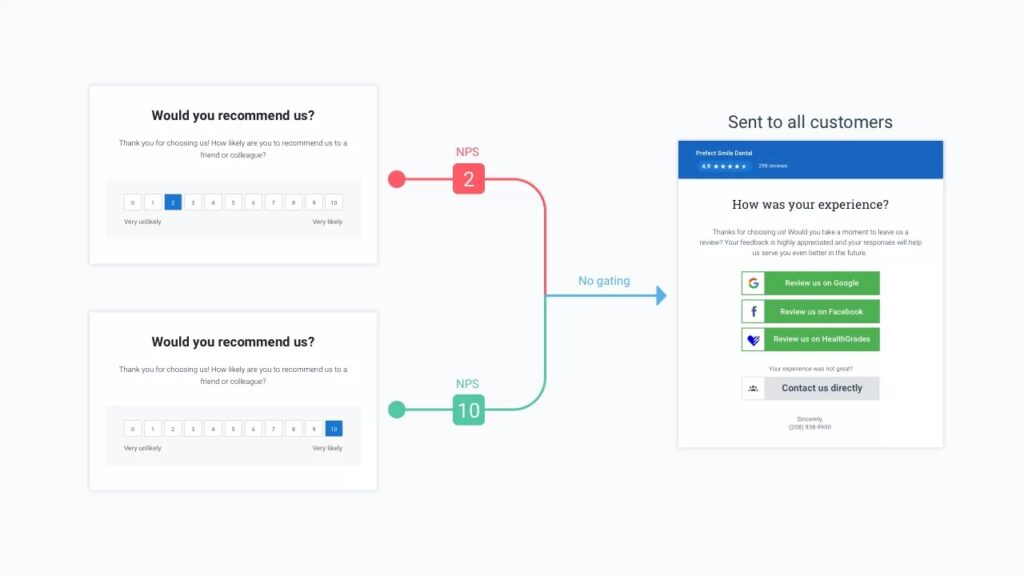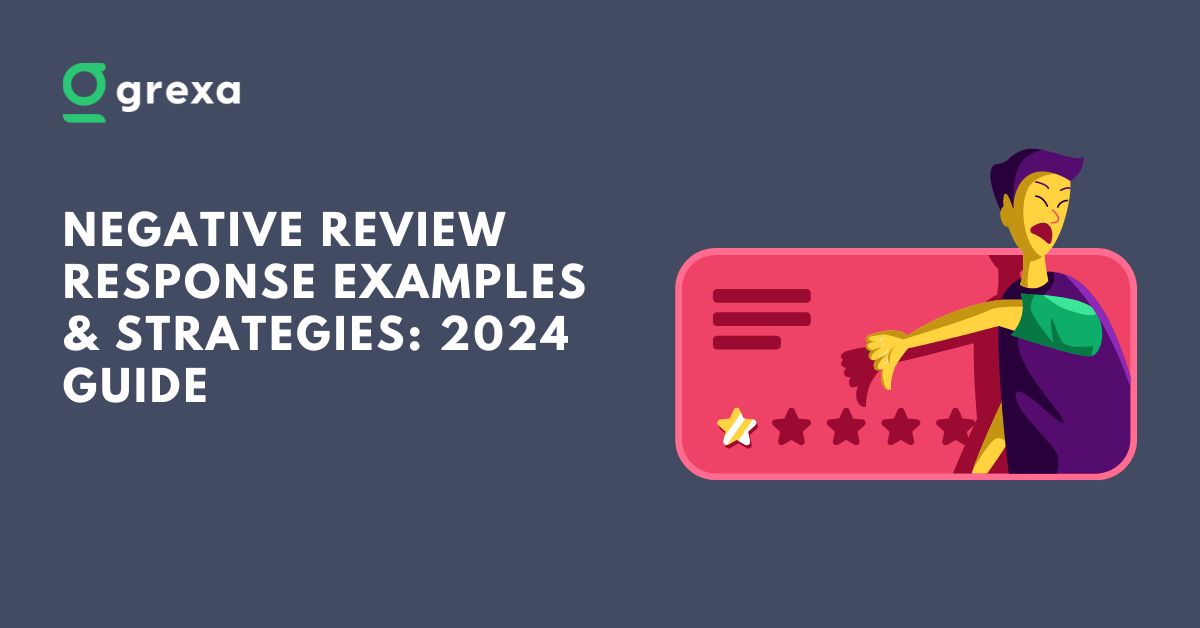Table of Contents
Introduction:

In the digital age, online reviews hold immense power in shaping a business’s reputation. According to a survey by BrightLocal, 91% of consumers trust online reviews as much as personal recommendations, making them a critical factor in attracting new customers and boosting revenue. However, negative reviews can have a detrimental impact, driving potential clients away and tarnishing your online presence. Also, don’t try to buy google reviews to inflate your rankings.
Enter review gating, a controversial yet increasingly popular strategy to manage customer feedback. In this comprehensive guide, we’ll dive deep into the world of review gating, exploring its benefits, potential drawbacks, and best practices to help you navigate this complex landscape in 2024.
Understanding Review Gating: How It Works

Review gating is a process that involves strategically directing customers to different feedback channels based on their level of satisfaction. The goal is to encourage happy customers to leave public reviews while channeling dissatisfied customers to provide private feedback directly to the business. Here’s how it typically works:
- Customer Interaction: A customer engages with your business through a purchase, service, or other interaction that warrants feedback.
- Satisfaction Survey: The customer receives a survey via email or message, asking them to rate their experience or answer satisfaction-related questions.
- Gating Trigger: Based on the customer’s survey response, a predetermined trigger (e.g., a high satisfaction score) determines the next step.
- Positive Reviews: If the customer expresses high satisfaction, they are directed to leave a review on public platforms like Google Reviews or Yelp.
- Direct Feedback: If the customer reports a less-than-satisfactory experience, they are guided to provide feedback through a private form or channel managed by the business.
Common gating triggers include satisfaction score thresholds (e.g., a minimum score of 4 out of 5) or sentiment analysis of the customer’s initial feedback. By implementing this, businesses aim to proactively manage their online reputation while still gathering valuable insights from both happy and dissatisfied customers.
The Power of Review Gating: Benefits for Your Business
When executed correctly, it offers a range of advantages that can significantly impact your online presence and bottom line:
- Quality Control: By filtering out potentially negative reviews, you can ensure that the public feedback on your business is more representative of your products or services’ true quality.
- Proactive Problem-Solving: It allows you to address concerns promptly and privately, potentially turning a negative experience into a positive one before it escalates to a public review.
- Enhanced Customer Loyalty: By demonstrating that you value customer feedback and actively work to resolve issues, you can foster a sense of loyalty and appreciation among your clientele.
- Valuable Insights for Improvement: The private feedback collected through review gating can provide invaluable insights into areas where your business can improve, driving product innovation and service enhancements.
- Increased Visibility and Trust: Positive reviews generated through review gating can serve as powerful social proof, attracting new customers and boosting your search engine rankings.
However, it’s crucial to recognize that review gating is not without its risks and ethical considerations.
The Pitfalls of Review Gating: Potential Drawbacks and Risks
While review gating offers numerous benefits, businesses must be aware of the potential downsides and implement the strategy thoughtfully:
- Bias and Skewed Perception: If the gating criteria are too stringent, you risk creating a biased representation of your business by filtering out valuable feedback from moderately satisfied customers.
- Discouraging Open Communication: It should not appear as an attempt to suppress honest feedback. Clearly communicate the purpose of the initial survey and ensure that both positive and negative responses are welcome.
- Transparency and Trust: Be transparent about your review gating process to maintain customer trust. Explain your criteria and avoid creating a system that seems manipulative or misleading.
- Google’s Stance on Review Gating: Google’s policies explicitly discourage this activity, stating that businesses should not selectively solicit positive reviews or prohibit negative ones. Violating these guidelines can result in penalties or removal from Google’s platforms. Learn more about google policies here.
It’s crucial to familiarize yourself with Google’s content policies for reviews, which outline guidelines against misrepresentation and fake engagement. Violating these policies can result in serious consequences for your business’s online presence. To mitigate these risks, it’s essential to approach review gating with a focus on transparency, fairness, and a genuine commitment to customer satisfaction.
Best Practices for Effective Review Gating in 2024

To ensure a successful and ethical implementation of this, consider the following best practices:
- Clear and Transparent Communication: Clearly explain the purpose of the initial survey and how responses will be used. Use simple, jargon-free language to describe your gating criteria.
- Fairness and Inclusivity: Set gating criteria that capture a wide range of customer experiences, from negative to positive. Avoid creating an artificially high threshold that admits only the most glowing reviews.
- Easy and Flexible Feedback Submission: Provide clear instructions for submitting reviews on various platforms. Offer multiple feedback channels (e.g., online forms, email, phone) to accommodate customer preferences.
- Timely and Professional Responses: Acknowledge and respond to all feedback, both positive and negative. Express gratitude for positive reviews and address complaints promptly and professionally.
- Continuous Monitoring and Refinement: Regularly assess your review gating process’s effectiveness and make adjustments based on customer satisfaction scores and feedback analysis. Adapt your approach as your business evolves.
By adhering to these best practices, you can harness the power of review gating to build a strong online reputation, gain valuable customer insights, and achieve your business objectives.
Conclusion:
In the rapidly evolving landscape of online reviews, review gating emerges as a powerful tool for businesses seeking to manage their digital reputation in 2024. By strategically directing customer feedback and proactively addressing concerns, you can cultivate a positive online presence that drives trust, loyalty, and growth.
However, the key to successful review filtering lies in transparency, fairness, and a genuine commitment to customer satisfaction. By following best practices and avoiding potential pitfalls, you can unlock the benefits of this while maintaining the integrity of your online reputation.
To dive deeper into this and develop a tailored strategy for your business, consider downloading our comprehensive guide or scheduling a consultation with our expert team. With the right approach, review gating can be a valuable asset in your online reputation management arsenal, empowering you to thrive in the digital marketplace of 2024 and beyond.
FAQs:
Is review gating legal?
While review gating is not inherently illegal, it is subject to ethical considerations and platform-specific guidelines. Transparency and fairness are crucial to avoid misleading customers or violating review platform policies.
What are some alternatives to review gating?
Alternatives to review gating include:
– Encouraging all customers to leave reviews and responding to both positive and 0 negative feedback
– Proactively monitoring and addressing customer concerns across various online platforms
– Investing in exceptional customer service to generate organic, positive reviews
How do I determine if review gating is right for my business?
Consider the following factors when deciding whether to implement review gating:
– Your industry and its specific expectations for transparency and authenticity
– The resources required to effectively implement and maintain a review gating system.
– Your customers’ willingness to participate in the gating process Ultimately, a comprehensive online review management strategy that prioritizes transparency, responsiveness, and customer satisfaction can be just as effective as review gating in building a strong online reputation.



